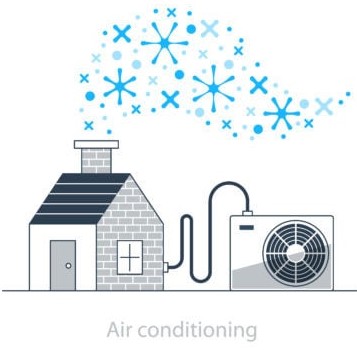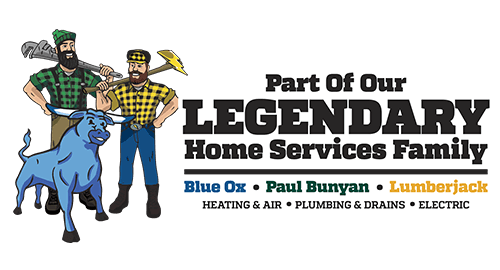Toilet paper is a hot topic right now, and people everywhere are thinking about alternatives during this time of hoarding. If you’ve experienced a clogged toilet, you understand how frustrating (and messy!) it can be. Preventing toilet clogs and protecting the Minneapolis, MN sewer system means understanding how your pipes work and how to protect them.
At Paul Bunyan Plumbing & Drains, we’re here to help you prevent clogged toilets, protect your community pipes and your own bathroom. Here’s why wipes and other things are bad for the sewer system, and how to ensure that only flushable things enter the wastewater treatment system.
Are Flushable Wipes Really Flushable?
Baby wipes aren’t just for babies – they can help adults feel fresh and clean, too! Flushable wipes are marketed in the toilet paper aisle and have become remarkably popular in the last several years. However, the title “flushable” is misleading. While these wipes can be flushed, this doesn’t mean that they should be flushed.
Flushable wipes can cause a lot of problems in your home’s plumbing and even more problems in the sewer mains, where they join commonly flushed items from other homes.
What Happens When Wipes Enter into the Sewer?
Although wet wipes are described as “flushable” and “septic safe” on the packaging, this isn’t actually the case. Wipes, paper towels, facial tissues, and toilet paper are all constructed differently. Toilet paper is made to break down in water and the sewer systems, dissolving to smoothly flow through pipes.
However, other paper products that commonly get flushed aren’t made in the same way. Paper towels are designed to be absorbent and flushing these can quickly lead to a clogged toilet. Facial tissues are smoother and are intended to not dissolve. Wipes are also constructed similarly to facial tissues. Both of these are made to hold together to clean yourself, not easily dissolve and come apart.
Once the “flushable” wipes are flushed, they travel into the sewer and get caught up with thick toilet paper, paper towels, and feminine care products. The congestion of all these products is referred to as “ragging”. This leads to clogs and back-ups, which takes a professional plumber to fix. if the problem is large enough, it can cause severe problems in a city’s sewer system, which can not only damage the pipes and pumps but may contribute to public health issues.
In the sewers, the wipes don’t break down all the way. They can twist as the water flows and wrap around the impellers of the sewer pumps. As the clogs build, they can arrest the spinning of the pumps and cause the motors to burn out, as the pumps aren’t able to operate properly. This causes problems and may require shutting down service to remove the clogs and clumps.
Preventing Clogged Toilets
Clogged toilets happen to everyone, but there are ways to reduce how often clogs happen. Make sure that you only flush toilet paper in the commode. Place other paper products in the trash can, including feminine products and wet wipes. You may choose to wrap these up for sanitary reasons or to have a small, separate trash can beside the toilet for cleanliness and discretion.
Just because something says it’s flushable doesn’t mean that the item can safely traverse the sewer system. Sewer systems are filled with specific enzymes that help break down toilet tissue and waste, but these enzymes simply aren’t powerful enough to tackle sturdier products. Furthermore, when sewage reaches a treatment plant, often these plants aren’t equipped to handle large chunks of undissolved paper products. This places additional stress on the wastewater treatment process.
The Debate Over Flushable Wipes
Who would expect that flushable wipes and a clogged toilet could be a hotly debated topic, but it certainly has been. City governments have been taking flushable wipes to task for labeling the wipes as “flushable” because the ragging that wipes cause damages city infrastructure.
The Association of the Nonwoven Fabrics Industry, or INDA, has developed a 7-part test that analyses whether a wipe can truly be flushable. This test, referred to as GD-4, determines whether a wipe will break down in the sewer similar to the way that toilet paper does. The INDA claims that these wipes are often lumped in with the non-flushable types of wipes, like baby wipes and disinfecting wipes.
However, environmental agencies say this test isn’t strict enough and a different test of flush-ability, the one developed by the International Water Services Flush-ability Group (IWSFG), should be used instead. Their flushability guidelines replicate the dynamics of wastewater treatment facilities and the way that waste goes from residential homes through the treatment facilities for processing.
This is a hot debate between wipe manufacturers and city governments. That being said, right now there isn’t a “gold standard” of all things flushable, and the makers of personal care wipes aren’t required to prove that their products are flushable.
Because there is evidence that wipes lead to a clogged toilet, it’s always better to only flush the “three P’s” in the toilet. Everything else should be placed in the trash. If you’re truly concerned about cleanliness in the bathroom, consider installing a bidet attachment for your commode. Your plumber can install these for you.
The Solution
If you have a clogged toilet or pipe pack-up, be sure to contact the services of a professional plumber. Paul Bunyan Plumbing & Drains based in the Minneapolis, MN area, has years of experience removing clogs and “ragging” issues in your home’s bathroom and pipes. Give us a call or visit us online to schedule preventative maintenance or call us 24-hours if a plumbing emergency arises. We’re here to keep your home’s system running smoothly!



